Monument Valley provides perhaps the most enduring and definitive images of the American West. The isolated red mesas and buttes surrounded by empty, sandy desert have been filmed and photographed countless times over the years for movies, adverts and holiday brochures. Because of this, the area may seem quite familiar, even on a first visit, but it is soon evident that the natural colors really are as bright and deep as those in all the pictures. The valley is not a valley in the conventional sense, but rather a wide flat, sometimes desolate landscape, interrupted by the crumbling formations rising hundreds of feet into the air, the last remnants of the sandstone layers that once covered the entire region.
It’s one of my favourite locations, one that I’ve had the good fortune to visit 4 or 5 times. On this visit, we engaged the services of a Navajo guide to direct us to the best photo sites on our early morning (5:30 am) quest. Tom, our guide is a photographer himself and he did not disappoint. Although I had previously visited many of the sites he showed us, I found his knowledge of the locations and the light conditions to be very helpful. It was good to do these areas again with the benefit of his knowledge and skill.
I’ll start with our first stop, a sunrise photo silhouetting the Totem Pole and the Yei Bi Chai Monuments, tall thin spires very popular with photographers, particularly at sunrise.
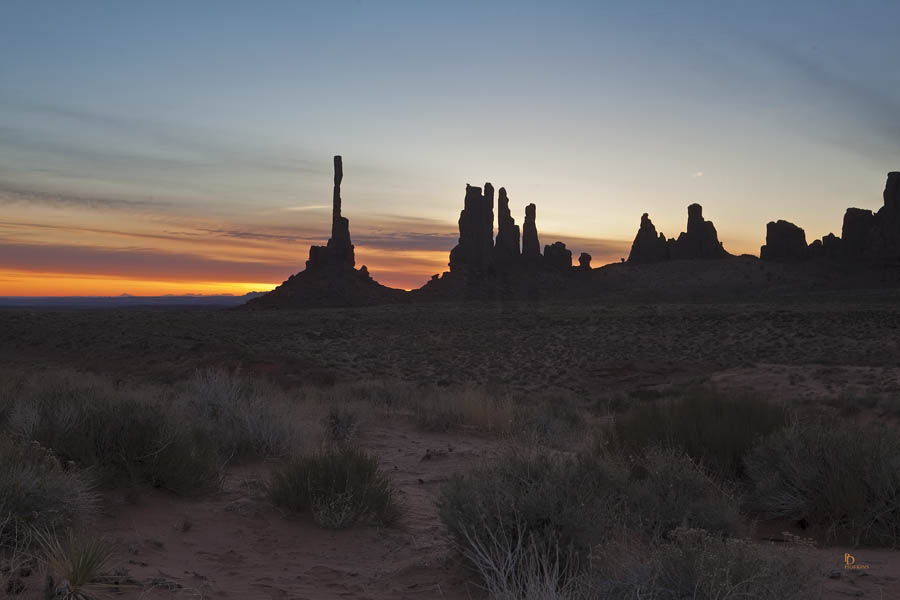
As the sun rose and the morning light brightened we were able to move to a second vantage point for photographing the Totem Pole et al. This shot was taken facing north and features sand dunes in the foreground.
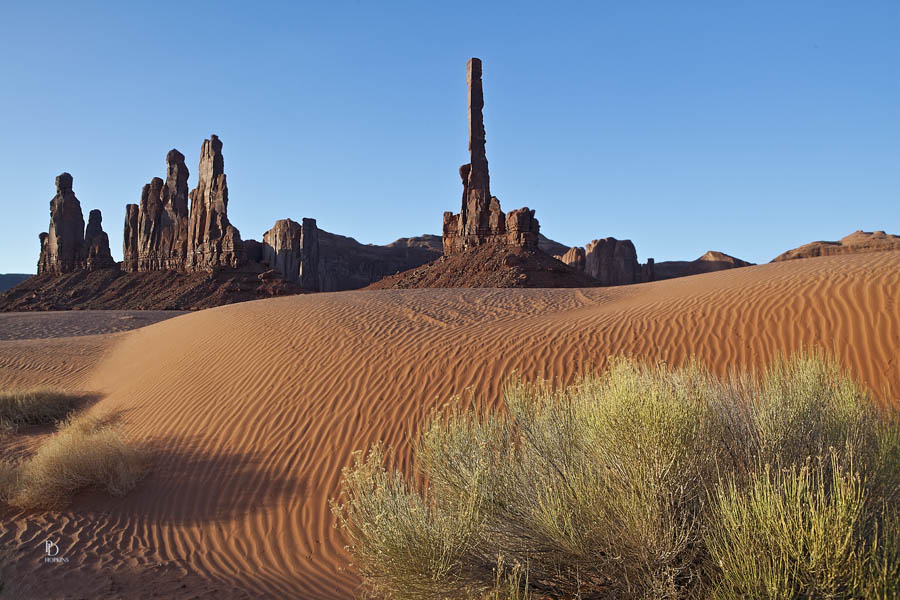
From another location nearby, I was able to get the next photo, looking south. It’s a wide angle showing a number of mesas in the soft light of early morning.
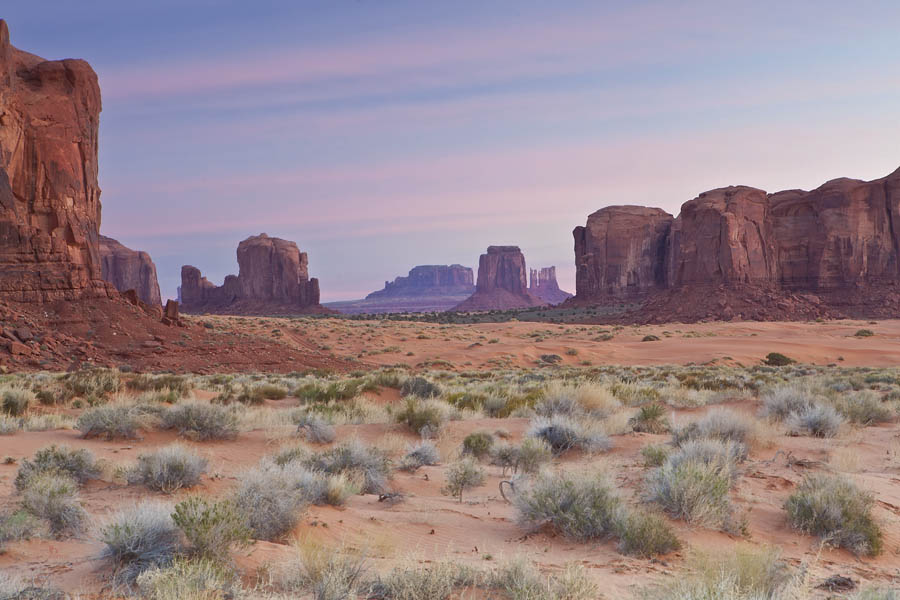
By the time we had completed these shots, our guide moved us into areas where we could avoid direct sunlight which was becoming quite bright. We moved first to an area called Big Hogan where we took close-up shots of this impressive rock structure.
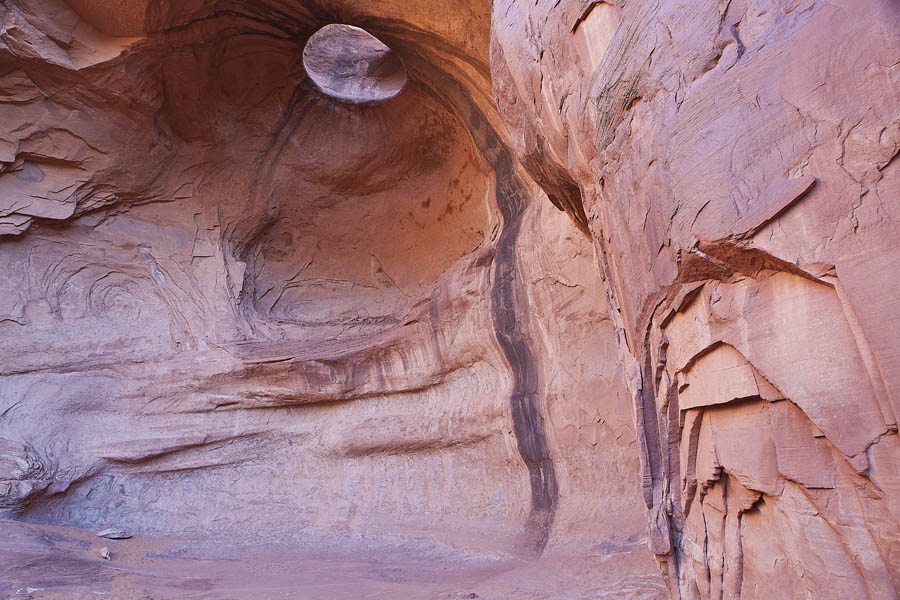
We completed our shots at Big Hogan in time to avoid bright light coming through the hole in the ceiling. We were able to avoid highlights and shadows which would have made it more difficult to capture the texture and colour of this structure.
Our next stop was at a much photographed rock structure that I had visited before, this one called Ear of the Wind. Tom was very specific about where we should position ourselves for our shots and I was quite pleased with the result.

By this time the sunlight had become quite bright and that is a good condition for this particular scene, taken from a shaded area where the photographer uses the silhouette of the old tree to frame the hole in the rock. I particularly like the glow on the walls inside the opening in the rock.
Next shot was taken at Eye of the Sun, another perforated rock structure. I moved in quite close and used five shots to create a vertical panorama. This enabled me to be close enough to capture the detail I wanted while getting the entire structure into the picture.
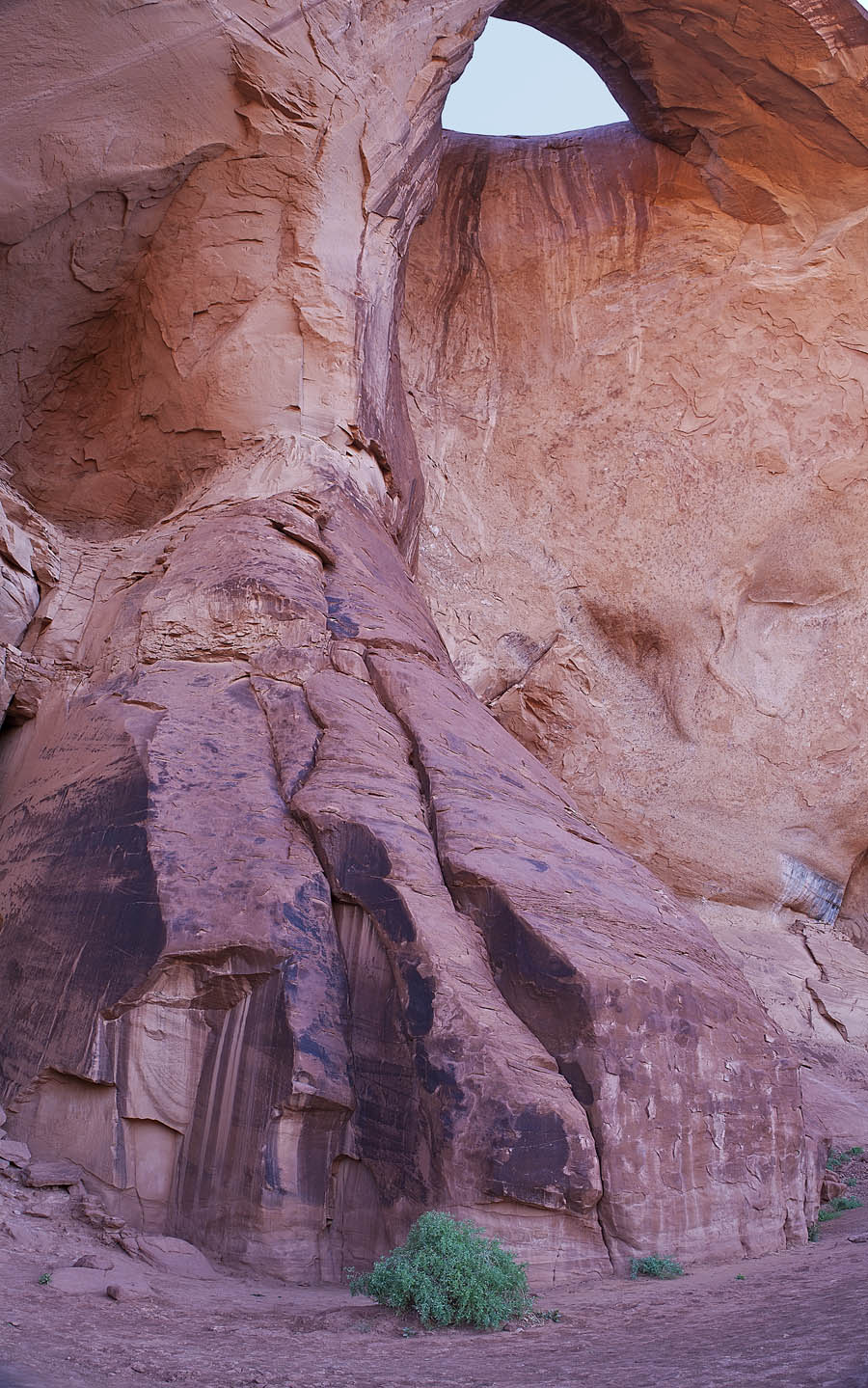
A fitting final photograph from our visit was taken on Highway 163 as we drove north toward our next destination, Moab Utah. It’s a familiar scene to those who remember the film “Forrest Gump”. It’s the place where Forrest ended his three year run back and forth across America. With this scene as the backdrop he turned around, faced his followers and declared “I’m pretty tired… I think I’ll go home now.”
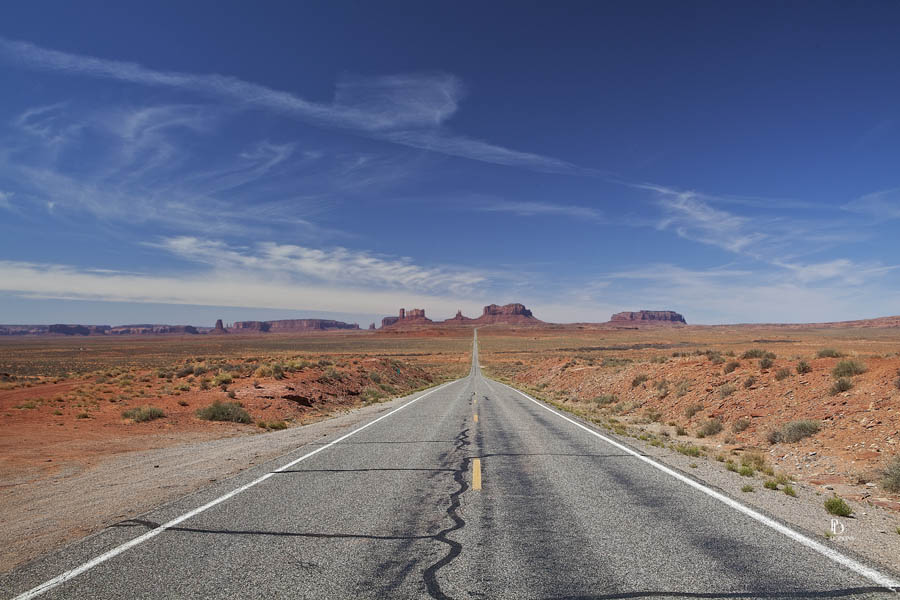
The next blog will feature pictures from Canyonlands National Park, near Moab Utah.
